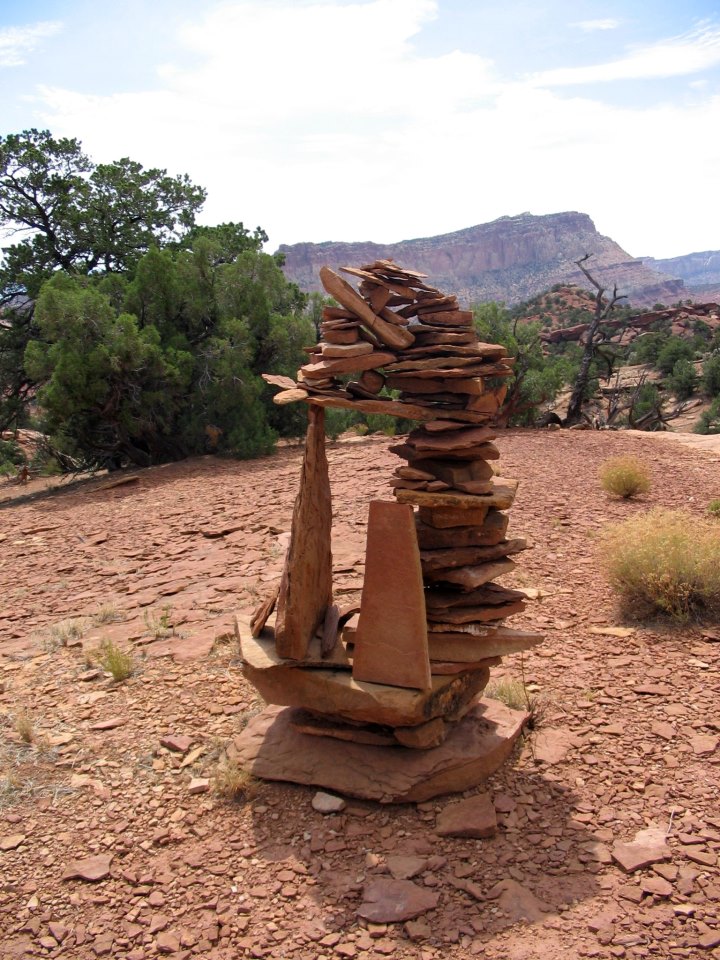This very handsome desert cairn illustrates the wonderful way that sandstone can be used to make a cairn. Because it often splits into pieces with two flat sides, sandstone blocks can be stacked into upright structures, something that you cannot do with rounded boulders and cobbles. This photo came to me from a park ranger at Capitol Reef National Park in south central Utah. Here’s what she told me.
“Unfortunately, I can’t give you too much detail about the cairn. I just remember it was on a not-so-popular trail, maybe even a route, off the west side of the Scenic Drive in Capitol Reef National Park. I really liked it because it was so intricate and well made. Who spent all that time? And, why? I do remember thinking that some park rangers would have knocked it down, but I just took a photo! I can appreciate modern day ‘rock art’!”

